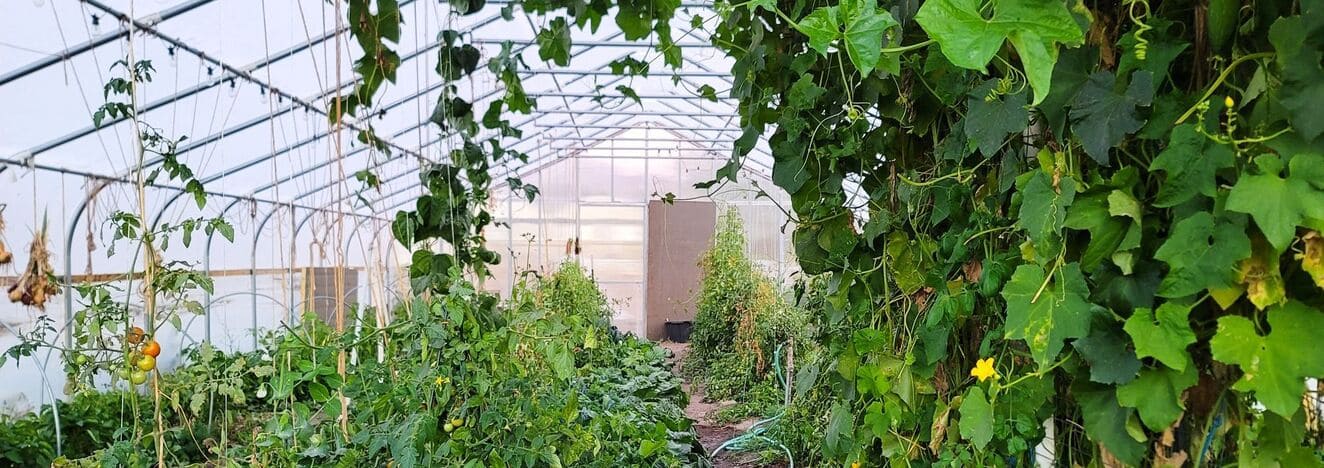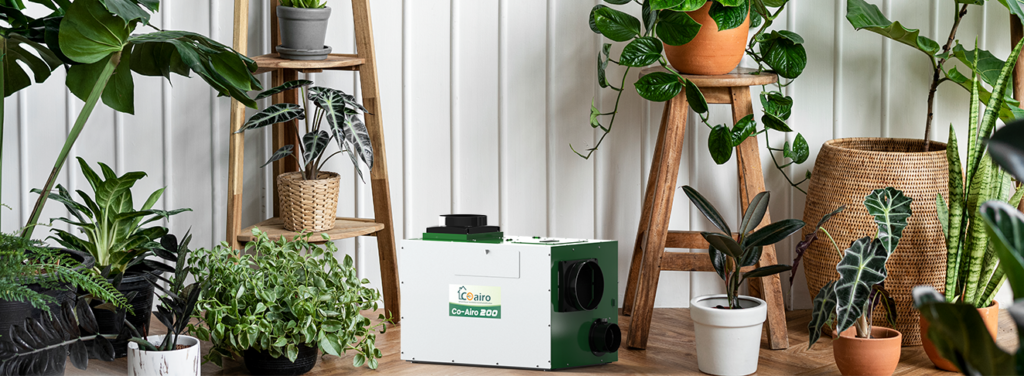Creating the right environment inside a greenhouse is a delicate balance between temperature, humidity, and airflow. These two factors—temperature and humidity—directly affect plant growth, disease resistance, and yield potential in your greenhouse. Understanding how they work together helps growers maintain optimal conditions year-round, ensuring that crops thrive regardless of outside weather.
Ideal Greenhouse Temperature and Humidity
Temperature
A well-controlled greenhouse temperature is the foundation of successful crop production.
During the daytime, most crops perform best when temperatures stay between 65–75°F (18–24°C). Within this range, photosynthesis operates efficiently, and plant metabolism remains active. For example, tomatoes, peppers, and leafy greens such as lettuce thrive under these conditions, showing strong vegetative growth and balanced water use.
At night, temperatures should be lowered to 55–65°F (13–18°C). The cooler period allows plants to respire and recover from daytime activity. This diurnal temperature difference promotes sturdier stems, improved flower development, and balanced sugar distribution within the plant.
Humidity
Equally important is humidity. Maintaining a relative humidity (RH) of 50–70% helps plants grow optimally. In this range, transpiration occurs at a steady pace, ensuring efficient water and nutrient movement through the plant. Humidity control becomes especially critical during flowering and fruiting stages, when excess moisture can cause mold, mildew, and poor pollination. Keeping RH stable prevents these issues while reducing stress on both plants and the greenhouse environment.
The Physical Relationship Between Temperature and Humidity
Temperature and humidity are physically linked—when one changes, the other responds. Understanding this relationship is the foundation of climate control in greenhouses.
A. Temperature Increases → RH Decreases
As temperature rises, air expands and can hold more water vapor. However, if moisture input remains constant, the relative humidity decreases.
For instance, when vents are opened on a warm day, the incoming air can hold more moisture, helping to lower RH inside the greenhouse. This is why ventilation and heating often work together to reduce humidity.
B. Temperature Decreases → RH Increases and Condensation Risk
Think of air as a sponge. The warmer it is, the more water vapor it can hold.
When the air is cool, that sponge shrinks—it can’t hold as much water, so humidity rises quickly, and you might see condensation on leaves or the greenhouse roof.
That’s why in winter, even if the greenhouse feels damp, the air can’t absorb much more water, so humidity easily climbs to 90% or higher
The Key Link: VPD
Growers often talk about “humidity” in percentage terms (RH), but there’s a better way to think about plant comfort: VPD (Vapor Pressure Deficit).
Vapor Pressure Deficit (VPD) measures the difference between the amount of moisture in the air and the maximum it could hold at a given temperature. In simple terms, VPD means how eager the air is to take water away from the plant.
- When VPD is low, the air is already full of moisture, so plants transpire slowly.
- When VPD is high, the air is dry, and plants lose water faster through their leaves
For most greenhouse crops, an ideal VPD range is 0.8–1.2 kPa, balancing transpiration with nutrient uptake and minimizing disease risk.

How Temperature and Humidity Together Affect Plant Growth
Water Movement and Nutrients
Plants take up water and nutrients through their roots, then move them upward as they transpire.
Too humid → slow transpiration → poor nutrient flow.
Too dry → fast transpiration but risk of drought stress.
The right balance ensures smooth nutrient delivery and healthy growth.
Photosynthesis and Respiration
Warm, moderately humid air helps plants photosynthesize efficiently. But when it’s too hot, plants spend more energy “breathing out” (respiration), leaving less energy for growth. At very high humidity, leaves can’t cool themselves well, and gas exchange becomes less efficient.
Flowering and Pollination
High temperature or very dry air can dry out pollen, reducing germination and fruit set. On the other hand, if the air is too damp, pollen clumps together and can’t spread. That’s why stable day–night temperatures and moderate humidity are key for good flowering.
Yield and Quality
Low humidity (high VPD) can speed up sugar accumulation in fruit but may cause cracking. Very humid air (low VPD) can lead to watery fruit, pale color, and disease. Balanced humidity helps fruit ripen evenly and develop flavor.
Diseases and Pests
Most fungal diseases love humid, still air. High humidity makes leaf surfaces stay wet, letting spores germinate easily. Proper air circulation and balanced VPD keep diseases under control naturally.
Conclusion
Successful greenhouse cultivation depends on mastering the interplay between temperature and humidity. The two are inseparable: each influences how plants breathe, feed, and resist disease.
Maintaining temperatures between 65–75°F (18–24°C) during the day and 55–65°F (13–18°C) at night, along with humidity levels of 50–70% RH, creates the ideal environment for most crops. Adjusting these factors with ventilation, heating, and dehumidification not only enhances plant health but also stabilizes yields and reduces disease pressure.
Healthy Air, Happier Plants — Powered by Coairo 🌤️
In every greenhouse, balance is everything.
The Coairo Greenhouse Dehumidifier helps you master the air your plants breathe—removing excess humidity, preventing disease, and creating a calm, stable environment for natural growth.
Because when your plants thrive, so do you.



